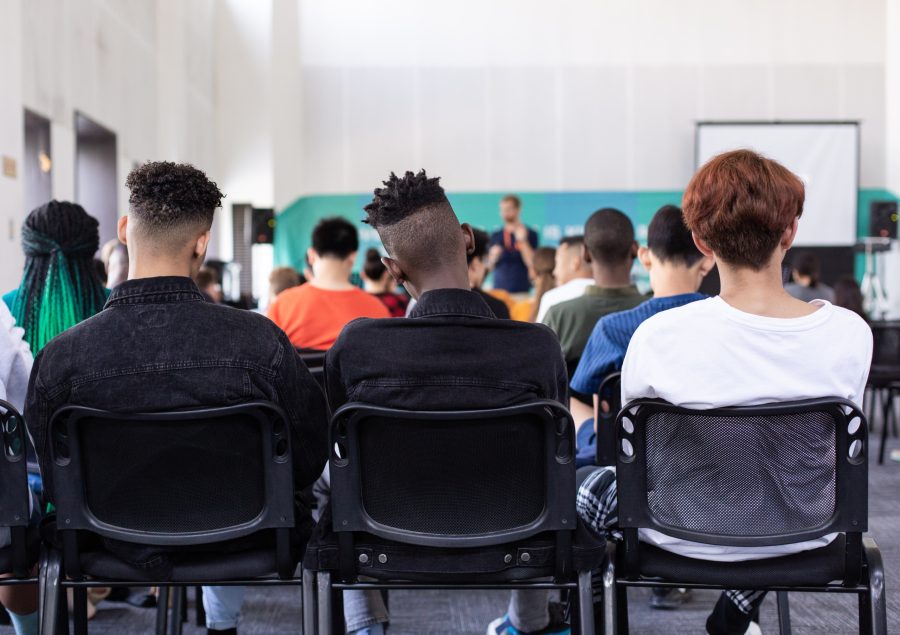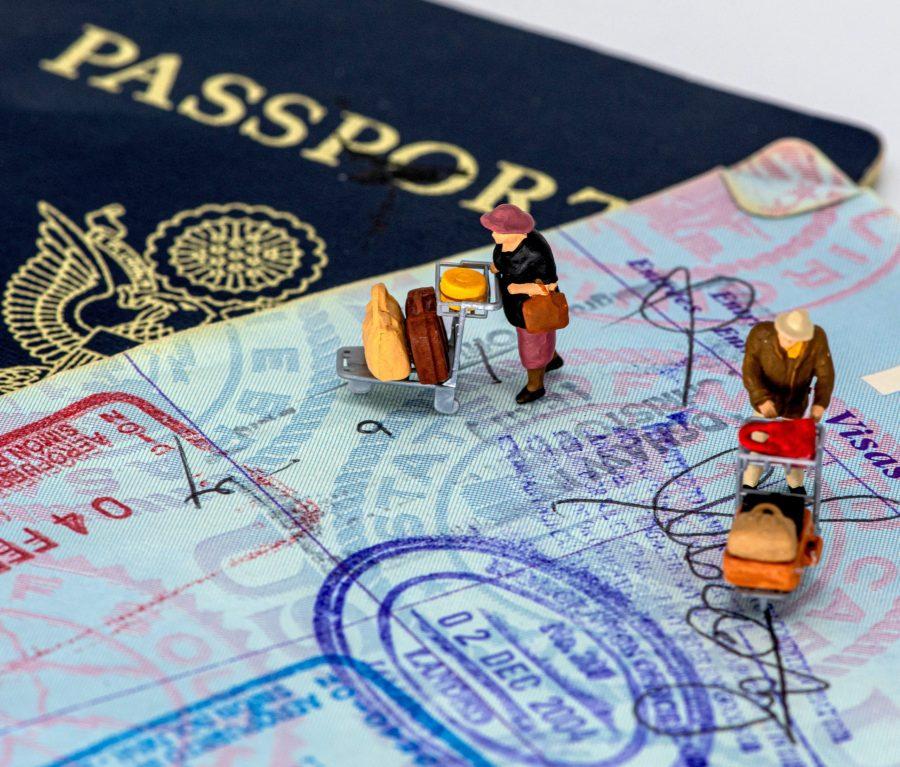The sound of competitive ballroom dancing is not the tired strains of a waltz and the shuffle of old folks. It is the click of three-inch heels on hard wood floors and the determined swish of pirouetting turns. It is the melodies of No Doubt flowing into a latin rumba beat. It is the yell of “5-6-7-8” as dancers move to an interior rhythm during final rehearsals. Ballroom dancing is more than just sequins and sambas. It is a combination of performance art and serious athleticism that has taken a firm hold on college students across the country.
“People think of ballroom dancing as something their grandparents do,” said Peter Edwards, coach of the UCSD Dancesport team. “But they come out and see a competition and see that it isn’t just dorky people with dorky music. It is just as powerful as modern or hip hop dance, and that’s why college students are so excited about it.”
UCSD Dancesport team may have started with humble beginnings as a recreational club in 1989, but today it is the largest club sport on campus, with over 150 team members. This is broken down into a number of smaller groups, such as the performance-based hussle and salsa teams that do shows on campus throughout the year.
But it is the competition element that puts the sparkle in these dancer’s smiles.
“I like the thrill of a huge screaming crowd,” said dancesport captain and John Muir College junior Lindy Cabot. “It is a really different feeling than other dance styles since you have to worry about moving with another person.”
Cabot joined the team as a freshman and found a close-knit group of students.
“The ballroom community is really nice,” she said. “This team is like a family. We are really supportive of each other and hang out when we’re not dancing.”
Edwards attributes the development of ballroom dance students to that partnership aspect, since it requires effective social skills.
“I’ve seen a lot of freshman start here not knowing anything about themselves,” he said. “Then, through physical movement they come into their skins. They learn that you have to communicate to have a good partnership and that if you move wrongly you can hurt other people.”
Within competitions, there are a variety of styles and levels. The formation team is a group of eight couples doing a choreographed routine in unison. Edwards choreographs the routines and mixes the music, usually based on a theme such as “Top Gun” or “Evita.” The routine incorporates several dances such as samba, jive, rumba, paso doble and cha-cha.
In January, UCSD’s formation team won first place at the Intercontinental Collegiate Championship in Dayton Beach, Fla., with an “Evita”-themed routine. They were able to beat longtime rival BYU-Idaho, a university that has a major in ballroom dance.
“We didn’t just beat them by a little, we beat them by a lot,” Edwards said.
The individual couple events are the other side of competition that allow for more spontaneity and creativity. The events fall into four categories: international standard, American smooth, international Latin and American rhythm. International standard and American smooth both feature dances such as the waltz and tango, while international Latin and American rythm include dances like the cha-cha and rumba. Partners can participate in as many events as they choose, though typically they focus on just a few.
According to Edwards, international Latin and American rhythm are the most popular among college students since they allow for more personality to come through. International standard is the most traditional style, but since it is very disciplined, few students participate in it.
“It is like the ballet of ballroom,” Edwards said. “It is a lot of technique that students just aren’t into. That’s why I don’t teach it unless it is specifically requested for a private lesson.”
Unlike the group practice schedule of the formation team, individual couples must work with a coach or other dance professional to develop choreography on their own. Since the dancers do not know the specific music that will be used during the competition, they must develop moves that fit the correct rhythm and tempo, but can be adjusted to fit the selection during the event.
“It allows for spontaneity and creation rather than reproduction,” Edwards said. “I always tell them it is about being in the moment, being in space now. It is performance art, so once you do it, it is gone. So you have to create it new every time to get that same adrenaline and excitement.”
Don’t let the rhinestones and bright smiles fool you — this is hard work. Members of the ballroom dance community, who use the term “dancesport” to highlight the sport aspect, are currently seeking the acceptance of ballroom dance as an Olympic event.
“It is art, but it is also a sport,” Edwards said. “My kids come out of practice sweaty and tired just as much as the guys playing basketball over there.”
One of the keys to good dancing is making it look effortless, so many do not realize the hours of intense practice that go into the competitions. Female dancers cha-cha in three-inch heels without breaking their dazzling countenances, but the footwear is not without its drawbacks.
“You get used to it,” Cabot said. “Even when we’re dancing in regular shoes, we are up on our toes because we’re used to it. But we’ve all got blisters and cuts, blood in our shoes. It is just part of the sport, like ballet.”
The competition season for the team starts locally, with the ninth annual Dance by the Shores championships on March 6. Over 20 universities regularly attend, including Stanford and University of Southern California. The all-day event is held at the Main Gym, and after the amateur competitions there will be a show put on by professional dancers. For students, it is $5 to attend all of the events.
To get involved in ballroom dance, Edwards recommends starting off with club events or classes to get experience in various styles without spending lots of money.
“Never narrow yourself from the beginning,” he said. “Have fun with different styles and find what best suits you. Then you can focus in and take private lessons and find the group you like.”
UCSD’s Ballroom Dance Club holds free events each quarter that allow students to try out dancing. They even offer lessons before the dance event starts if you are brand new. For information on events in spring quarter, e-mail [email protected].
Another option is the recreation department classes, which are offered to students for a low fee. Under the social dance category there are classes in ballroom, Latin and swing that range from beginning to advanced levels. To register for classes, visit http://recreation.ucsd.edu.
“Like anything else, it isn’t what you’re doing, it is who’s there,” Edwards said. “The reason the team is attractive is because they put off a good vibe since everyone is trying to be positive and upbeat. I have a degree in microbiology. I do this because I get a kick out of people in dance. The liveliness of the sport attracts people with a lot of life.”







